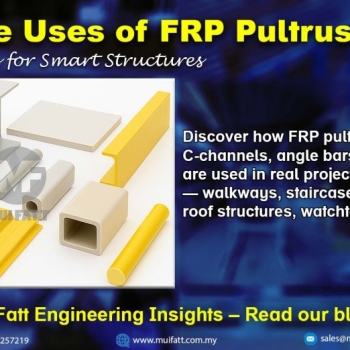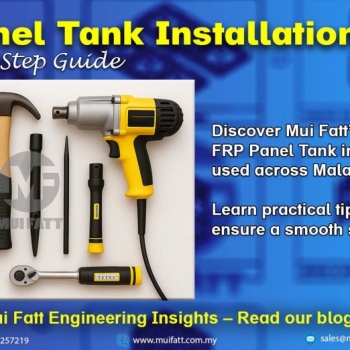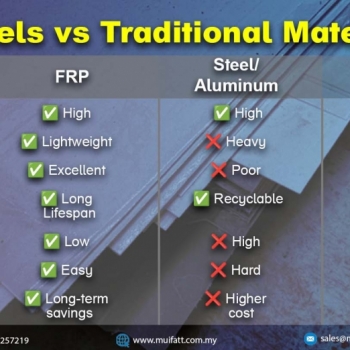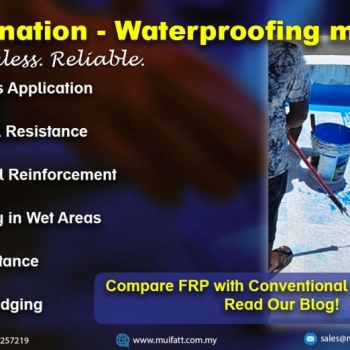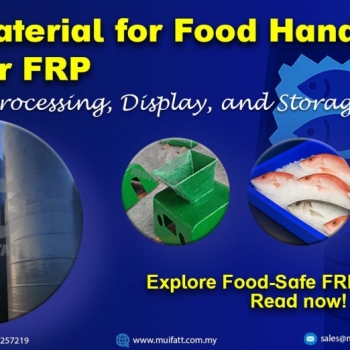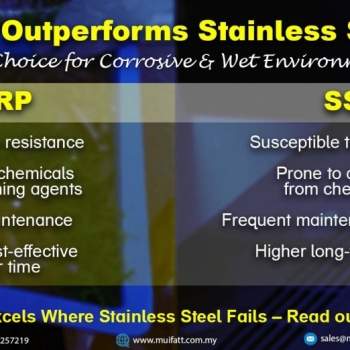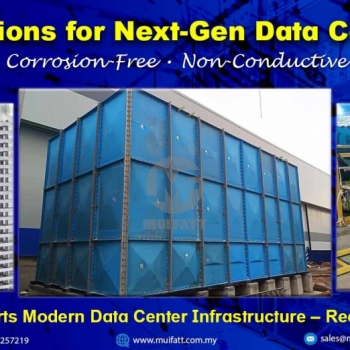FRP pultruded profiles are reshaping structural possibilities across Malaysia. From STP staircases to public park shelters, explore how these modular components enable custom FRP solutions—only from Mui Fatt.
The Ultimate Guide to Fiberglass-Reinforced Plastic (FRP) Pots
28 Apr 2023
The COVID-19 pandemic had awakened many garden enthusiasts and landscapers. With the need to stay at home and practice social distancing, people have been spending more time in their homes and gardens, and many have turned to gardening and planting as a way to pass the time and improve their surroundings. Gardening and planting have become increasingly popular and widespread among Malaysian.
With the rise in popularity of gardening and planting, people are starting to invest in a “home” for their beloved plants. This means they are willing to invest time and money into creating a space that can support their plants’ growth and well-being.
Let’s dive into the ultimate guide to Fiberglass-Reinforced Plastic (FRP) Pots with us here.
The Ultimate Guide to Fiberglass-Reinforced Plastic (FRP) Pots
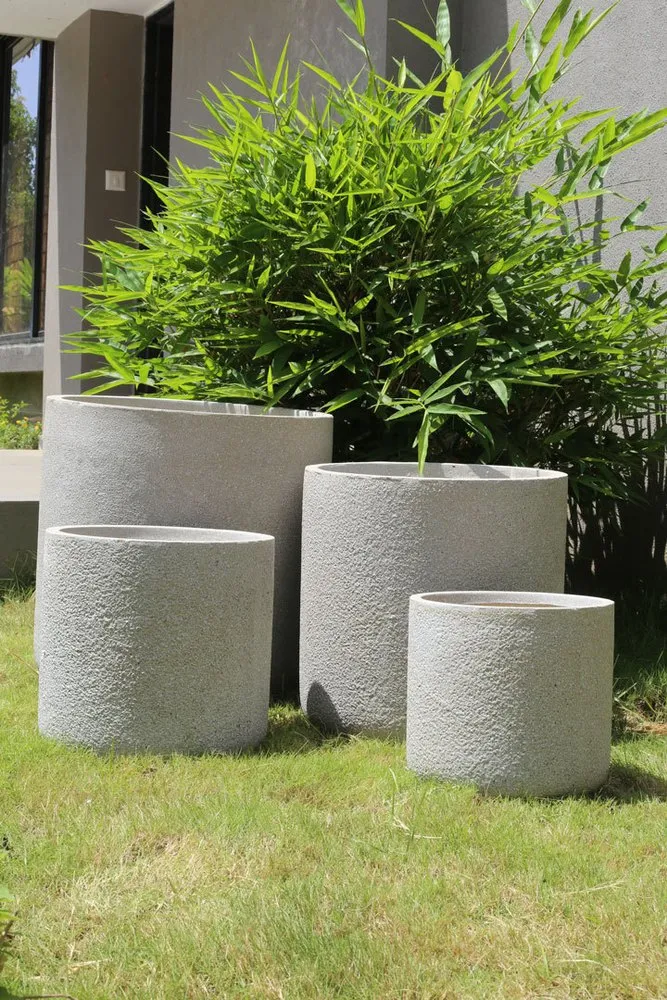 FRP Planter Pots is often use in commercial and residential landscaping projects, as well as for personal gardening and decorative purposes. They are often used to create green roofs or rooftop gardens1, which can help reduce energy costs and provide a range of environmental benefits.
FRP Planter Pots is often use in commercial and residential landscaping projects, as well as for personal gardening and decorative purposes. They are often used to create green roofs or rooftop gardens1, which can help reduce energy costs and provide a range of environmental benefits.
Municipalities and other organizations may also use fiberglass planters for public beautification projects or to create green spaces in urban areas.
FRP is a common material in producing planter pots, especially for outdoor and commercial applications. It is an excellent choice for planters that need to withstand the elements (wind, rain, and sun exposure)
In this article, we will be exploring on the benefits of using Fiberglass-Reinforced Plastic (FRP) Planter Pots in Malaysia’s tropical climate, their relation to landscape architecture, and offering tips on choosing the perfect design and care for your plant.
Benefits of using Fiberglass-Reinforced Plastic (FRP) Planter Pots
FRP planter pots are incredibly resilient, making them ideal for Malaysia’s tropical climate. They are UV-resistant, ensuring that they maintain their color and appearance despite constant exposure to sunlight. Furthermore, they can withstand heavy rain and high humidity without rotting or corroding, providing a long-lasting solution for your gardening needs.
One of the main advantages of FRP planters is their lightweight nature. As mature plants can be quite heavy, traditional planter materials can also contribute to the overall weight, making them difficult to move or rearrange. FRP planter pots’ lightweight nature makes them easy to transport and reposition, allowing you to frequently update your garden or indoor space’s layout. Additionally, their lightweight nature makes them ideal for rooftop gardens or balconies with weight restrictions.
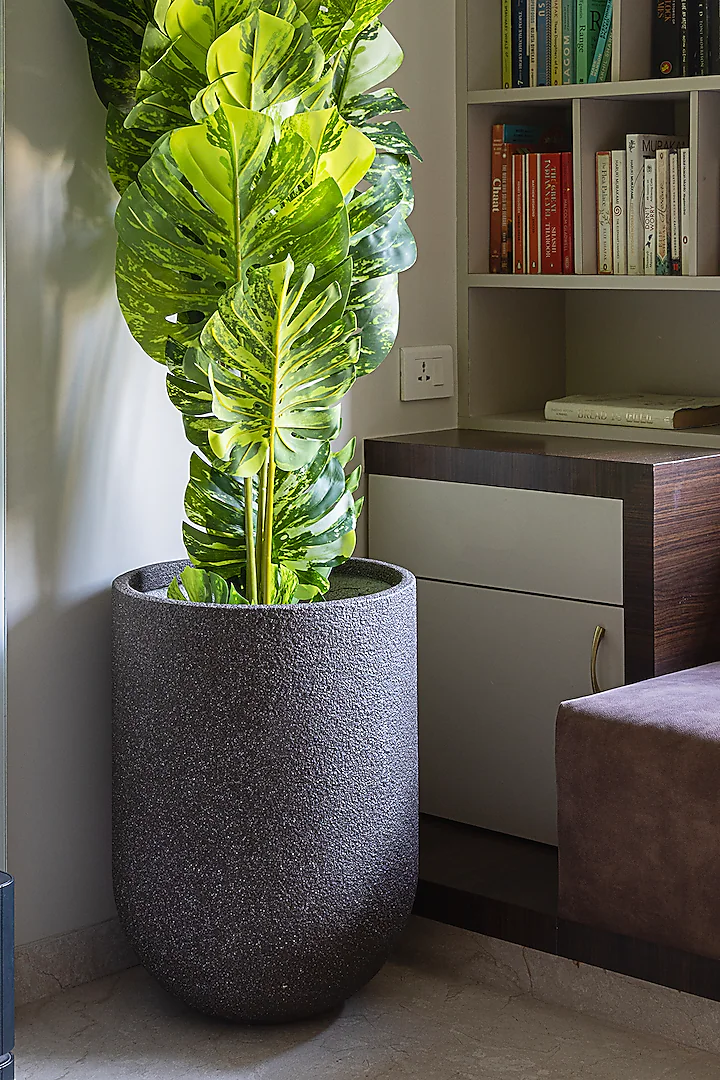
Fiberglass can be versatile and stylish, from modern, sleek designs to more traditional, ornate options; from small tabletop or windowsill planters to larger commercial planters that are several feet tall, there’s a fiberglass planter to suite every taste. It will definitely allow you to find the perfect match for your Malaysian home or garden.
FRP planters require minimal maintenance compared to other materials such as terracotta or wood. They do not need regular sealing or painting to maintain their appearance and durability. Simply clean them with mild soap and water to keep them looking fresh and new.
Moreover, as more Malaysians become environmentally conscious. FRP planter pots offer an eco-friendly alternative to plastic pots. They are long-lasting, reducing the need for frequent replacement, and providing a sustainable solution to your gardening needs.
FRP Planter Pots and Landscape Architecture
FRP planter pots are a great addition to any landscape architecture project. They can be used to create focal points, define outdoor spaces, and add greenery to urban areas. With their durability, versatility, and eco-friendliness, FRP planter pots can be an essential element in a landscape architect’s design toolkit, offering numerous benefits and creative opportunities.
Mui Fatt’s FRP planter pots offer a range of features that landscape architects can incorporate into their project in many ways.
The flexibility of FRP’s design allows landscape architects to choose the perfect pots for each project, as fiberglass planter pots come in various shapes, sizes, and styles that can help create a cohesive look or add visual interest to a space.
Furthermore, with their durability and ability to withstand harsh weather condition, landscape architects can confidently incorporate these low-maintenance planter pots into their designs, knowing that they will last for years with minimal upkeep.
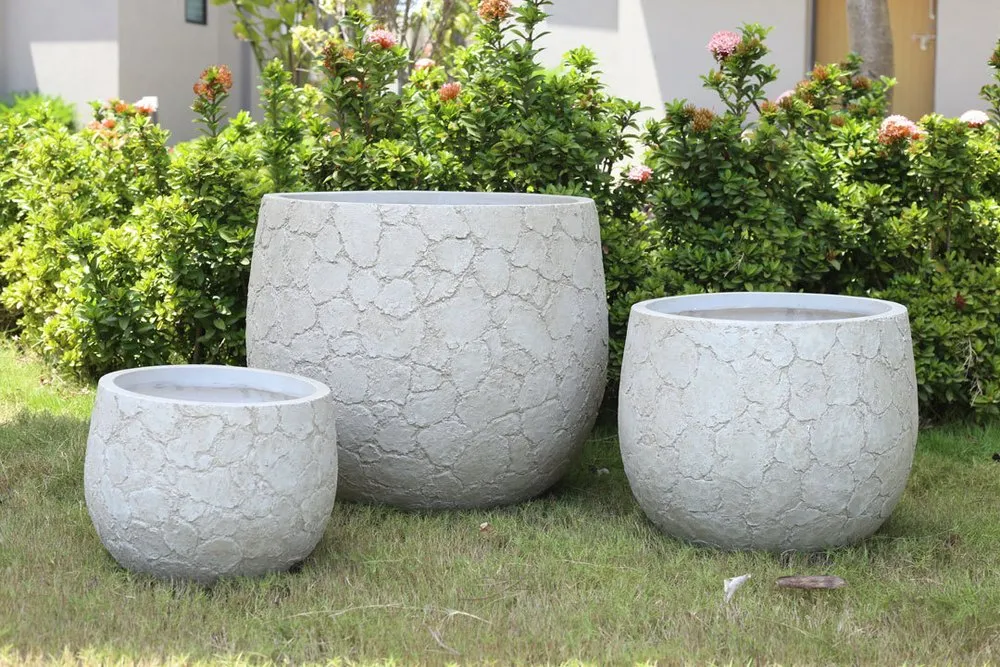
FRP planter pots are lightweight and easy to relocate. This feature allows landscape architects to modify their designs easily as the plants grow and evolve. On top of that, these babies are the favourite choice for rooftop gardens and balconies, enabling landscape architects to create green spaces in urban environments where traditional gardening may not be possible.
Another advantage is that FRP planter pots are highly customizable, allowing landscape architects to create unique and tailor-made designs for their projects. Large and uniquely crafted planters can help define spaces or guide visitors through a space, especially when creating focal point.
Tips on choosing the perfect design and care for your plants
Choosing the right size and shape is crucial when it comes to planting in FRP planter pots or any pot made of other materials. Different plants have different requirements for root space and depth, so it’s important to choose a planter pot that is appropriate for your plant’s needs. A rule of thumb, choose a pot that is at least 2 inches wider in diameter than the plant’s root ball. Consider the height of the pot as well, as some plants, such as succulents, prefer shallow pots while others, such as tomatoes, need deeper pots.
Before planting, make sure to check for drainage by ensuring that the FRP planter pots have holes at the bottom to allow excess water to drain out. You can further improve drainage by adding a layer of stones or pebbles to the bottom of the pot before adding soil.
Use a good quality potting mix that is appropriate for your plant’s needs. Some plants, such as cacti and succulents, require a well-draining mix, while others, such as ferns, prefer a moist mix. Water your plants appropriately when using FRP planter pots, as they can dry out more quickly than other materials. Water your plants when the top inch of soil is dry to the touch, and water thoroughly until water drains out of the bottom of the pot. Avoid overwatering, as this can lead to root rot.
Remember to provide proper care for your plants by regularly watering, fertilizing, and providing adequate sunlight. Also, be prepared to repot your plants as they grow and their root systems expand.
With these tips, you can enjoy beautiful, healthy plants in your FRP planter pots for years to come while contributing to a more eco-friendly environment.
Talk to us for your landscaping today! WhatsApp or email – sales@muifatt.com.my
We offer custom designs, ensuring you can create a unique and personalized garden space. We also have experience in supplying products to Malaysian authorities such as Jabatan Kerja Raya (JKR) or Majlis Perbandaran Daerah. All of our FRP planters comply with landscape architecture requirements and can be imprinted with logos.
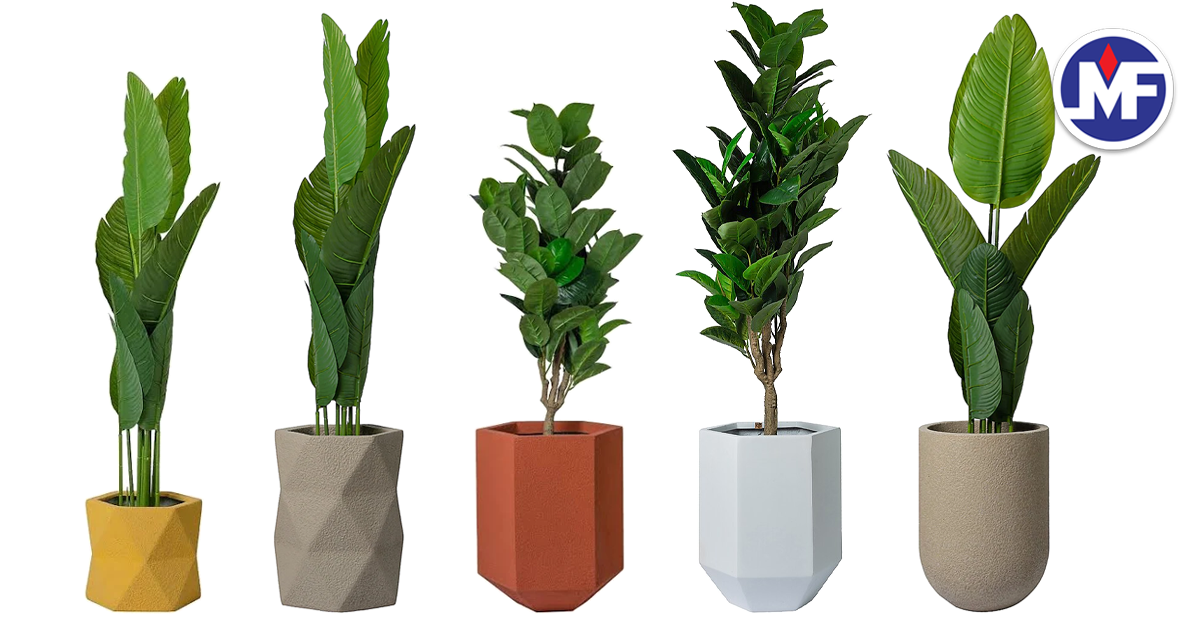
Visit our product page for more product details – Decorative Planter Pots
1. A green roof or rooftop garden is a vegetative layer grown on a rooftop. Green roof systems include several different layers, including structural support, vapor barrier, thermal insulation, root barrier, drainage layer, filter membrane, growing medium, and vegetation. (ref link: https://calrecycle.ca.gov/organics/compostmulch/toolbox/greenroofs)
Disclaimer:-
The information provided on this website is for general informational purposes only and does not constitute legal advice. While we strive to ensure the accuracy and reliability of the information provided, we make no representations or warranties of any kind, express or implied, about the completeness, accuracy, reliability, suitability, or availability concerning the information contained herein. Any reliance you place on such information is therefore strictly at your own risk. This website may contain links to other third-party websites. Such links are only for the convenience of the reader, user, or browser; which we do not warrant, recommend, endorse, or assume liability for the contents of the third-party sites.
Keep in touch with us should you be keen on receiving timely updates from us
- Website - https://www.muifatt.com.my/home/
- Facebook - https://www.facebook.com/muifattmarketing
- Instagram - https://www.instagram.com/muifattmarketing/
- Google - https://goo.gl/maps/WxVY13gNcaRTS7Jp6
- Youtube - http://www.youtube.com/@MuiFattMarketing
- TikTok - https://www.tiktok.com/@muifattmarketing
- LinkedIn - https://www.linkedin.com/company/mui-fatt-marketing-sdn-bhd-
- Linktree - https://linktr.ee/muifattmarketing
- Shopee - https://www.shopee.com.my/muifattmarketing
- Lazada - https://www.lazada.com.my/shop/mui-fatt-marketing
Recent Blog
Mui Fatt Engineering Insights - FRP Panel Tank Installation
Get to know the step-by-step assembly process of FRP sectional panel tanks, based on Mui Fatt’s industry-proven practices. This easy-to-digest guide is ideal for project managers, contractors, and technical personnel involved in water storage tank installation across Malaysia.
FRP Panels vs Traditional Alternatives: The Ultimate Guide to Durability and Sustainability
Explore why FRP (Fiberglass-Reinforced Plastic) panels outperform traditional materials like steel, plywood, and PVC in durability, sustainability, and cost-effectiveness. Discover real-world applications in MyKiosk projects and cold truck panel assembly, where FRP’s superior insulation, corrosion resistance, and lightweight properties deliver long-term benefits.
Comparing FRP Waterproofing with Traditional Systems
Is FRP lamination a better waterproofing method than traditional systems? Explore this complete guide with real project examples and see why FRP is gaining traction across Malaysia.
Benefits of FRP in Food Handling & Processing
With hygiene, durability, and corrosion resistance at its core, FRP (Fibreglass Reinforced Plastic) is becoming a preferred material in the food industry. This article explores why FRP is ideal for food handling equipment such as supermarket fish trays, water tanks, and food factory platforms, plus how Mui Fatt is delivering proven solutions through its successful FRP applications.
Mui Fatt Insights: Advanced Materials for Modern Needs
Is stainless steel the best for wet areas? This article explains why more industries are switching to FRP for its corrosion resistance, hygiene benefits, and longevity, especially in food displays and chemical exposure zones.
How FRP Supports Modern Data Center Infrastructure
Discover how fiberglass-reinforced plastic (FRP) is reshaping data center construction. Learn its key advantages, comparisons with other materials, and where to apply FRP—from rooftop chillers to cooling tanks.
Understanding FRP Filament Winding: Process, Benefits & Comparison
This article explores the FRP filament winding manufacturing method, how it differs from other FRP techniques, why it’s still widely used, and its long-term value for projects like high-strength tanks and cylinders.
